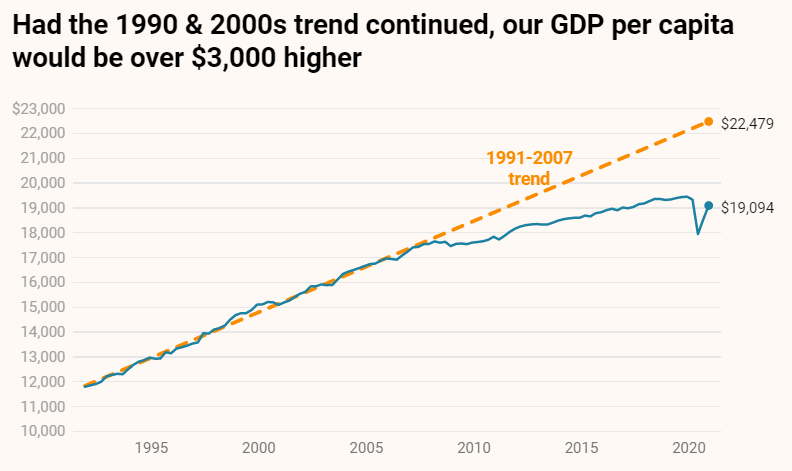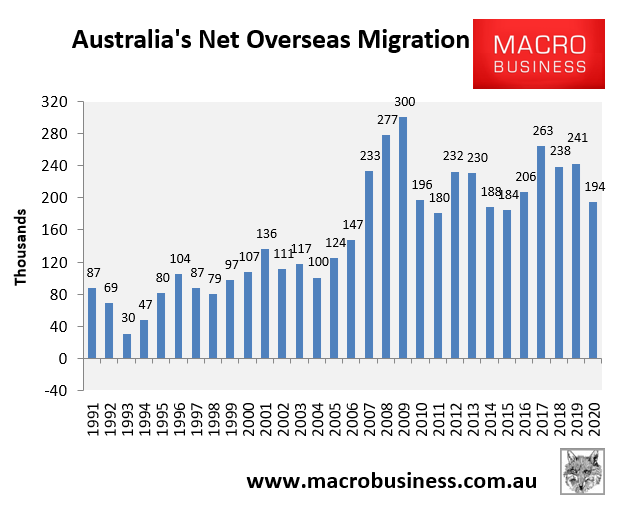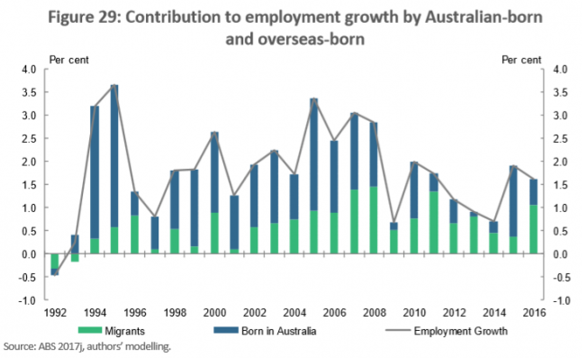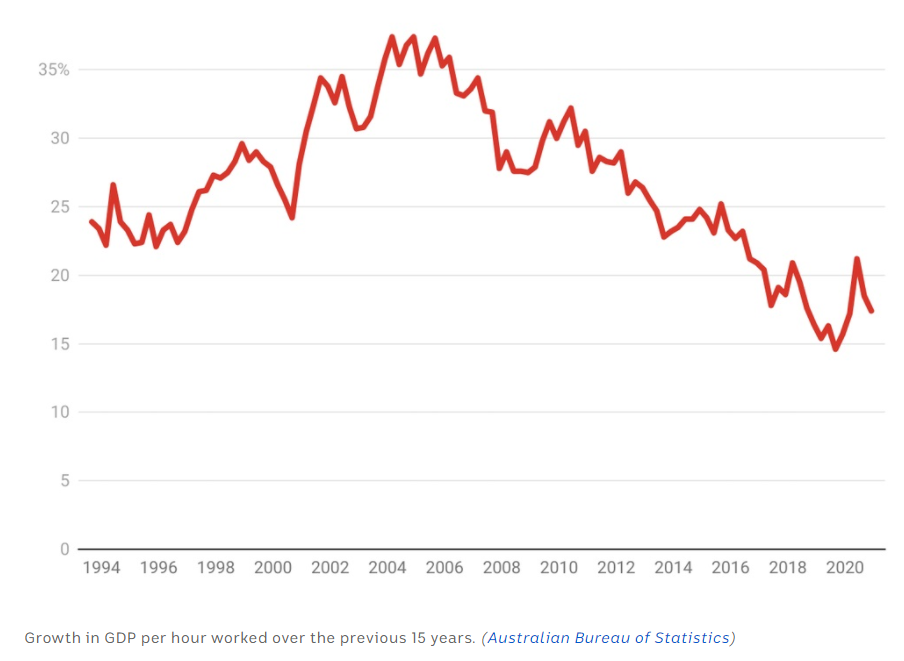The Guardian’s economics poster boy, Greg Jericho, has written another article chock full of shiny charts attacking the federal government’s inability to drive unemployment down and wage growth up.
Jericho’s key points are as follows:
- “We’ve had years of absurd budget projections about wages growth that never came true” because the Treasury’s assumed natural rate of unemployment (5%) was far too high.
- The Australian economy is suffering chronic labour underutilisation.
- Australia needs to get unemployment below 4% to drive wage growth.
- In the decade since the GFC Australia suffered from low per capita growth and stagnating real wages.
The next chart encapsulates Jericho’s arguments:
Regular readers will know that we agree with Greg Jericho’s points and have argued similar for nearly a decade. The difference is that unlike us, Greg Jericho deliberately ignores one of the key drivers of Australia’s sluggish per capita GDP and wage growth: mass immigration. Why? Because it is supposedly racist to suggest that Australia’s immigration intake was far too high:
“Immigration – because there are many desperate to hate – must be treated with extreme care by politicians and journalists… The inherently racist parties will seek to use any discussion and any seeming evidence of the negative impact of migrants as fuel to burn their fires of hate”.
Because of this view, Greg Jericho never mentions immigration, despite its obvious deleterious impacts on the labour market and wages. But the proof is in the data.
Australia’s net overseas migration (NOM) jumped from an average of 89,000 between 1991 and 2004 to an average of 215,000 between 2005 and 2020 – an annual average increase in immigration of 140%:
This huge increase in migrant workers flooded the labour market, making unemployment higher that it otherwise would have been and wage growth lower.
Heck, even the Australian Treasury’s own propaganda report, entitled Shaping a Nation, explicitly acknowledged that the overwhelming majority of Australian jobs growth went to migrants between 2011 and 2016:
Recent migrants accounted for two-thirds (64.5 per cent) of the approximately 850,000 net jobs created in the past five years. For full-time employment, the impact is even more pronounced, with recent migrants accounting for 72.4 per cent of new jobs created.
The flood of migrant workers also contributed to Australia’s productivity decline since 2005 by congesting our cities, driving up the cost of infrastructure provision, and discouraging firms from adopting labour saving technologies and automation (explained here).
The biggest risk to Australia’s labour market is the Morrison Government’s planned reboot of the mass immigration program via:
- Abolishing labour market testing requirements;
- Lowering costs and speeding up approval times for importing foreign workers;
- Expanding the skilled occupation list to include almost any role;
- Providing all ‘skilled’ visa holders with a clear pathway for transition to permanent residency; and
- Granting ‘skilled’ visa holders priority access to flights and hotel quarantine ahead of stranded Australians.
If the pre-COVID level of migration was restored, an extra 200,000 workers would enter the Australian labour market every year. This would necessarily drive up unemployment and put downward pressure on wage growth (other things equal), making it impossible to reach the new 4.5% unemployment target (let alone the 4% championed by Jericho).
Despite this threat, Greg Jericho refuses to question the Coalition’s immigration reboot because to do so would supposedly be ‘racist’ and ‘hatist’.
Yet it is precisely because of the Fake Left’s failure to rationally discuss immigration that ordinary Australians have been pushed to “the inherently racist parties” that Jericho hates so much.





